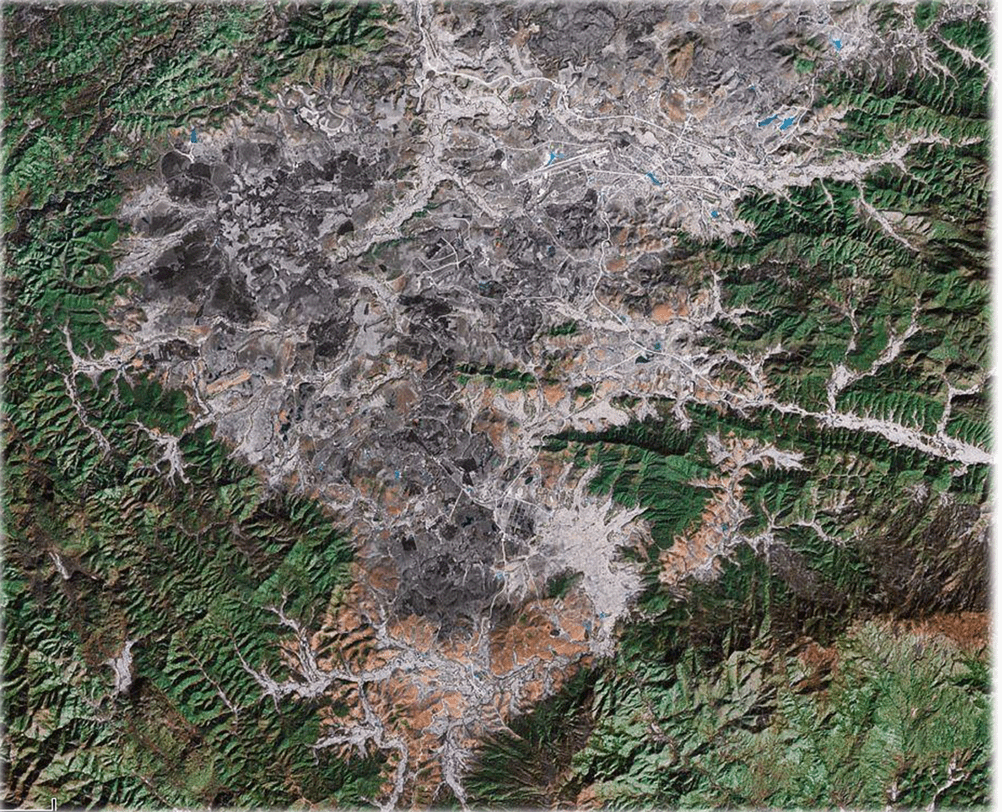
Plain of Jars Visit Info - Visitor Information for PDJ Laos - HoboMaps.com - Go to Plain of Jars Info Page - - - HOME
For travel info see our Travel Plain of Jars web page
The Plain of Jars (PDJ) is roughly the gray-colored area on the satellite image below. It's a flat basin on a plateau located in Xieng Khouang Province northern Laos. The size is approximately 450 square kilometers - 15 km wide east to west & 30 km north to south.

See our Maps - Phonsavanh Map - Plain of Jars Map - Maps of Jar Sites 1, 2 & 3
Xieng Khouang is pronounced "Shiang Kwan" and Phonsavanh is pronounced "Ponsavan".
Why Visit PDJ? - To stir the imagination and explore a strange landscape with a unique history and unsolved ancient mysteries. The area has been one of the most tortured landscapes on the planet but is now experiencing renewal.
You can stand on a hilltop today surrounded by megalithic jars and look out over a lowlands area that at one time may have been an ancient lake and imagine tree-covered hills surrounding that lake. What must have been a large and rather prosperous civilization has vanished without leaving us anything other than the jars.
Why Not to Go to PDJ -The PDJ today still has dangerous UXO lying about and people who want to wander about anywhere are advised to find some other place to do it as visitors should stay on roads and cleared pathways. Gourmet diners will be disappointed as will those seeking ancient cultural experiences. Shopping is limited and not great value. The general archicture in Phonsavanh is uninteresting. Not much to do in town and there's no nightlife.
Jar Site 1 lower area image below:
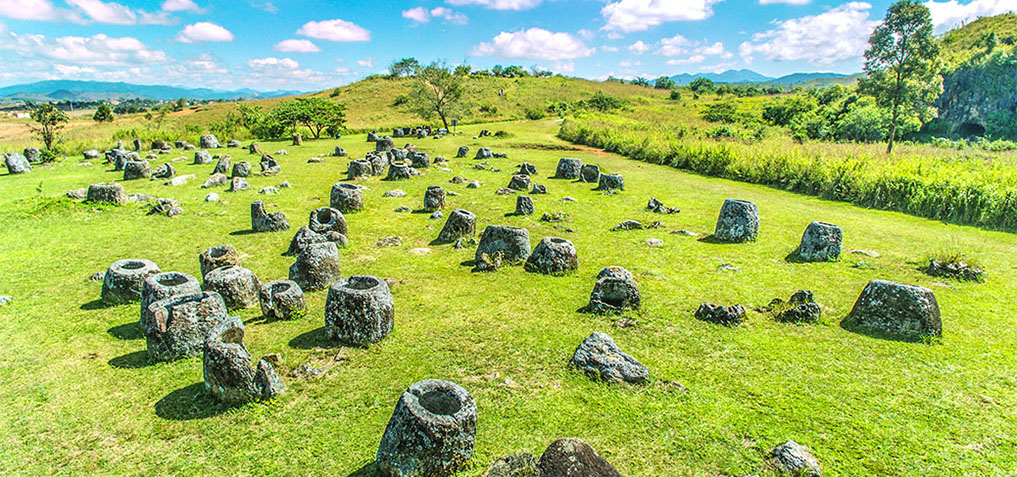
Getting to PDJ - most visitors arrive by bus via National Road 7 coming west from Phou Khoun town. Road 7 is a nice paved road with little traffic that extends past the Plain of Jars to Vietnam.
Direct bus service to/from PDJ (Phonsavanh / Xieng Khouang) is available from Vientiane, Paksan, Vang Vieng, Luang Prabang and Sam Neua. Phonsavanh is the only town of any size on the PDJ and is a relatively new town developed after the older capital at Muang Khoun (then known as Xieng Khoung) was totally destroyed by US bombing in 1969. Phonsavanh is a quiet place with paved streets, new sidewalks, streetlights and even some traffic signals. It has all the basic tourist services
Phonsavanh town images below: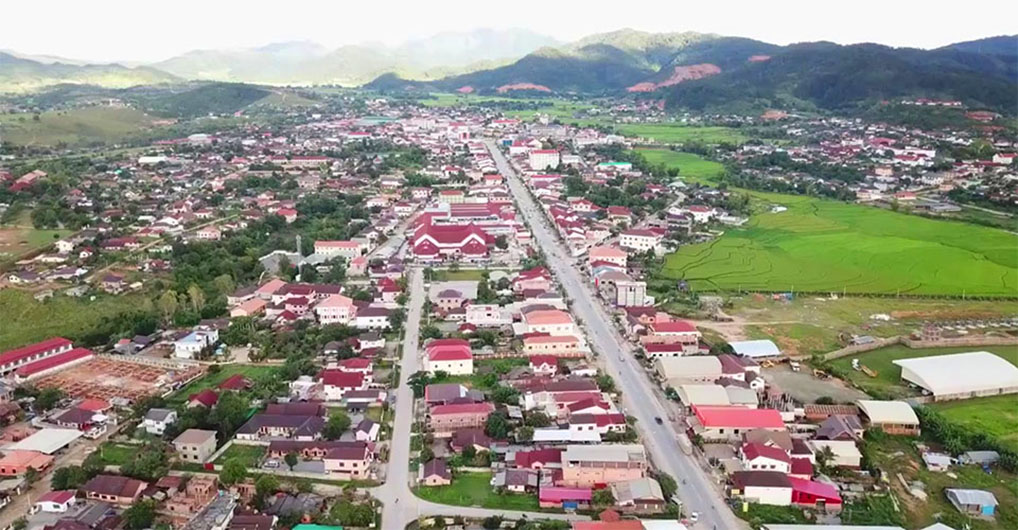
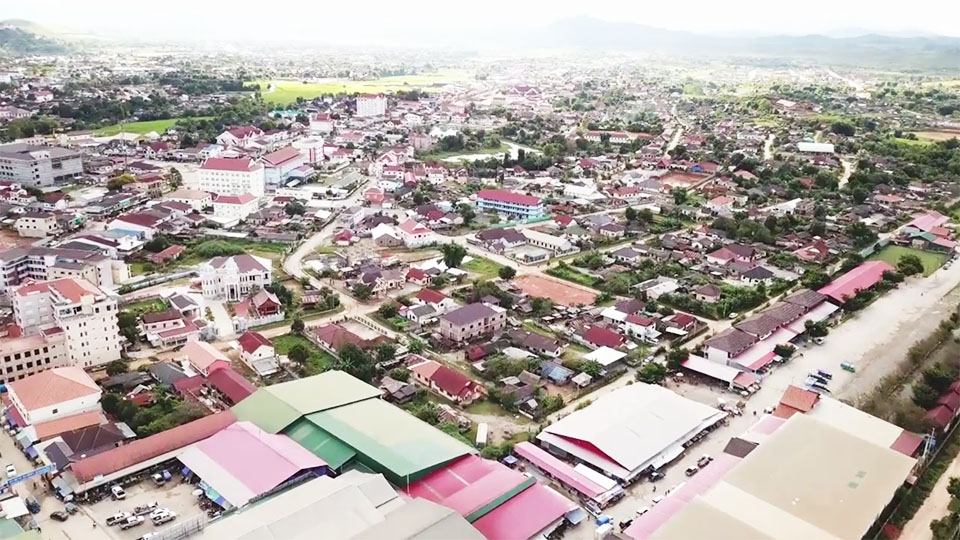
Trekking at the Plain of Jars is limited to areas already cleared of UXO and well-trodden paths.
Water sports are also limited with no organized kayaking or tubing and swimming (wading actually) is limited to ponds near caves or waterfalls.
Tourist Info - the Provincial Tourism Office in Phonsavanh is at grid code KI218 on this map . The town has travel agents and tour guide places in the central area.
Local Transport - the town of Phonsavanh is small enough to walk around but most other places of interest at the PDJ require some sort of transport. Bicycles and motorbikes sometimes are available for daily rental but only at one or two places so be sure to arrive as early as possible to get one.
Tuk tuk charters are the main taxis for visitors and in the central area drivers seem to speak a little English.
Songtaew buses go out from the bus stations to outlying areas but aren't usually used by visitors. Tourism authorities restrict their use in taking visitors to the jar sites and other tourist attractions where they prefer use of registered guides.
There is a Provincial Tourism Office in Phonsavanh at grid code KI218 on this map HERE that is open 08:30 to 11:30 & 13:30 to 16:00. The town has many travel agents and tour guide places in the central area.
Accommodation - there are over 60 places of visitor accommodation at PDJ with nearly all in Phonsavanh town. Prices are reasonable and quality is fine with good reliable electric and water service.
Hiking & Cycling - the PDJ has not been known in the past as a great place for hiking or cycling, in part due to fears of UXO and the lack of good maps showing safe areas for independent exploration.
Few temples still exist and not much interesting architecture or ancient history. Wat Piawat at the old capital has partially survived and is a great photo opportunity.
Serene bicycle or motorbike trips can be made on the back roads route from Phonsavanh town to Jar Site 2 & 3 - highlighted on our PDJ map HERE.
Short half-day hikes from town can be made to the cemetery hilltop north of town and the Vietnam and Laos Memorial hilltops south of town. All have great panoramic viewpoints.
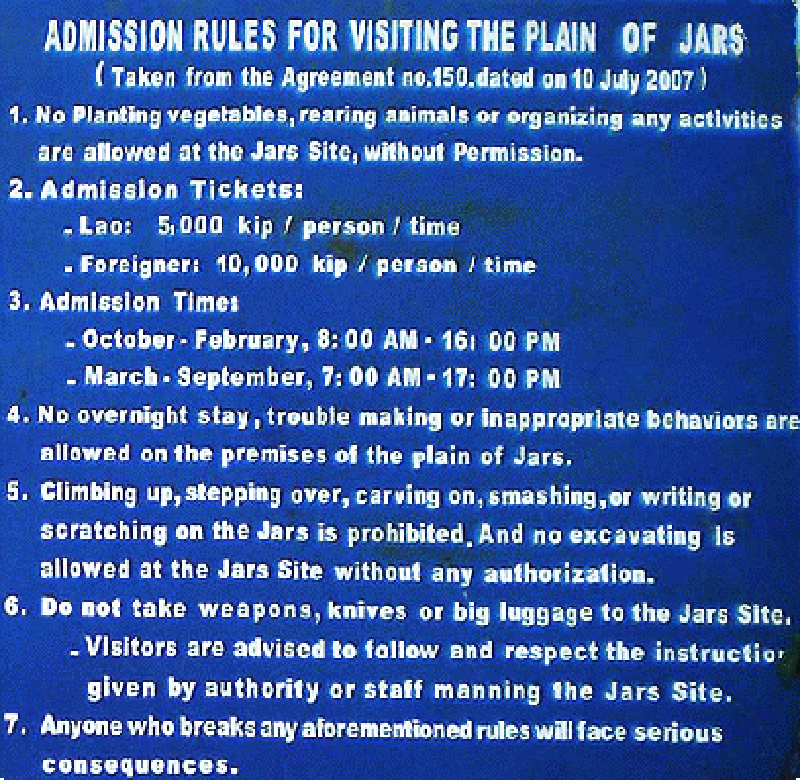
Visiting Jar Sites Without a Guide
Jar Sites 1, 2 & 3 are open to the public. Site 1 is about 10 km from central town but Sites 2 & 3 are much further south. From central Phonsavanh town it is about 24 km to Site 2 and 30 km to Site 3 one way.
A trip out to see all 3 sites would be about 38 km on the way out (including side trips to Sites 1 & 2) and 30 km back without side trips for a 68 km round trip total. Trying to visit all 3 sites by peddle bicycle in a single day may require peddling back in the dark.
Visiting Jar Sites on Guided Tour
Several tour agencies have daily tours to Jar Sites 1, 2 & 3 along with stops at the Provincial Tourism Office, Whiskey Village and a Russian tank and a noodle soup lunch at Site 3. If the weather is good we suggest asking the guide to let you walk the path between Sites 2 & 3 along a scenic ridge instead of riding in the minivan.
Some Jar Sites other than 1, 2 & 3 are open to visitors but we’ve had no luck getting organized tours or guides to take us to them as they’re further away from town and far apart. Some quarries are also open and cleared of UXO but not part of tours yet.
Phou Keng Quarry Now Open
The Phou Keng Quarry site was opened in early 2012. It is located at grid code JN164 on this map HERE and can be reached by going south on the road that joins Hwy. 7 between km markers 125 & 126 west of Phonsavanh. The quarry is about 18 km from central Phonsavanh via this route.
About 1,000 concrete steps go up a steep ravine at the quarry site to the summit of Phou Keng mountain where there is a secret tunnel and a natural cave plus nice views. Unfinished jars lie on both sides of the steps for easy viewing. Many of the jars at Jar Site 1 are thought to have come from this quarry.